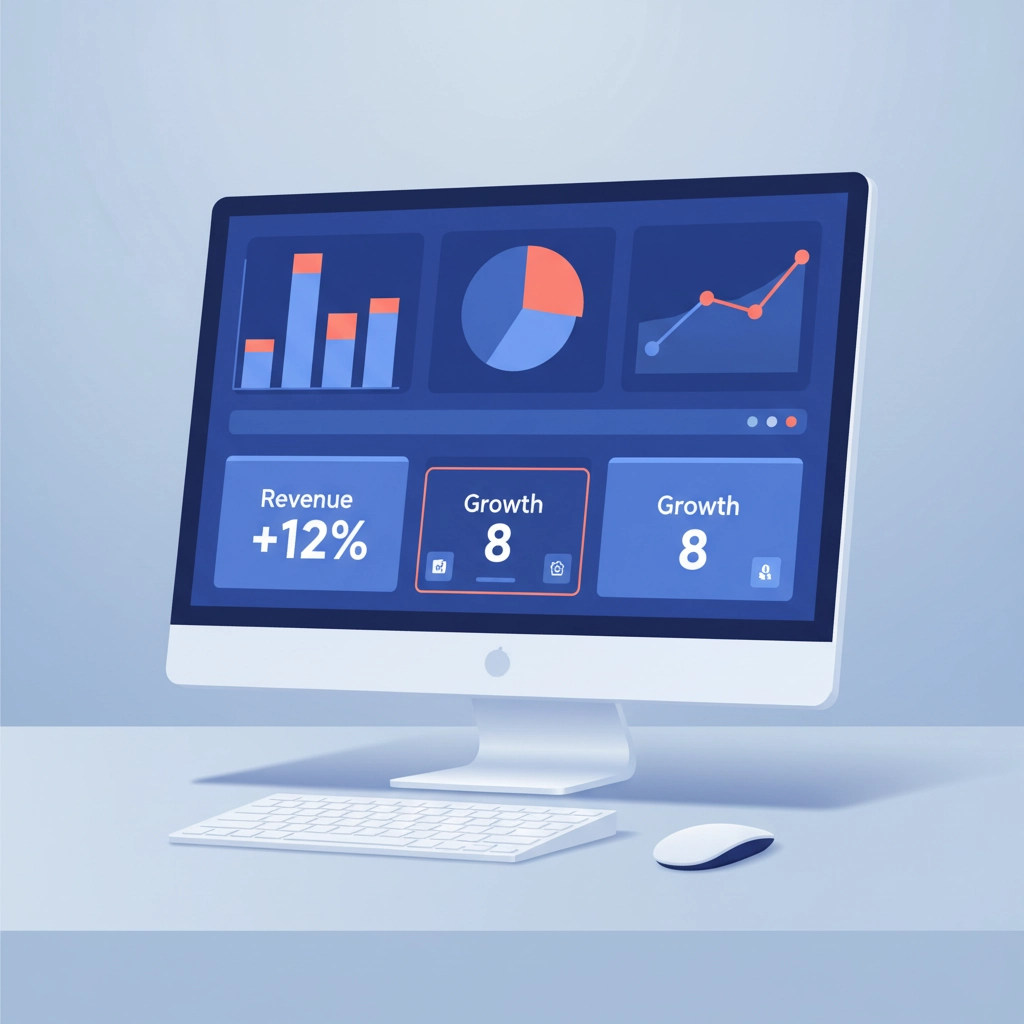Running a small or medium-sized enterprise today means navigating an increasingly complex financial landscape. Between managing cash flow, staying compliant with regulations, and making strategic decisions based on data, it's no wonder many SME leaders feel overwhelmed by the sheer volume of financial tools available.
Here's the thing though: the right digital finance tools can be game-changers for your business. They can automate tedious processes, provide real-time insights, and help you make decisions faster than ever before. The challenge? Knowing which tools to choose, how to implement them properly, and most importantly, how to turn all that data into actual growth.
This is where fractional finance directors come in as your secret weapon. They bring enterprise-level financial expertise to your business without the enterprise-level price tag, helping you navigate the digital finance landscape with confidence.
Why SMEs Struggle with Digital Finance Tools
Most SME leaders face the same frustrating scenario: they know they need better financial systems, but they're not sure where to start. The market is flooded with options – from basic accounting software to sophisticated forecasting platforms – and making the wrong choice can be costly.

The Common Pain Points:
- Tool Overwhelm: There are hundreds of finance platforms out there, each promising to solve all your problems
- Integration Headaches: Getting different systems to talk to each other properly
- Data Quality Issues: Having lots of data but struggling to trust or interpret it
- Time Constraints: No bandwidth to properly research, implement, and optimise new tools
- Budget Uncertainty: Not knowing whether you're overpaying or underspending on finance tech
Many SME owners end up either sticking with outdated spreadsheets or investing in expensive software that sits unused because no one has time to set it up properly.
What Makes Fractional Finance Directors Different
Unlike consultants who drop in for a project and disappear, fractional finance directors become part of your team. They typically work 1-3 days per week, giving you consistent, ongoing financial leadership without the £100,000+ salary of a full-time finance director.
Their Sweet Spot with Digital Tools:
- They've implemented finance systems across multiple businesses, so they know what works
- They understand SME budgets and can recommend cost-effective solutions
- They have the time and expertise to properly evaluate, implement, and optimise tools
- They can train your team and ensure adoption actually happens
- They stay current with emerging technologies and trends
The Four Key Areas Where They Transform Your Finance Function
Cash Flow Management and Forecasting
Cash flow is the lifeblood of any SME, yet many business owners are still managing it through basic spreadsheets or gut feeling. Modern cash flow tools can predict potential shortfalls weeks or months in advance, but only if they're set up correctly.
A fractional finance director can implement tools like Float, Pulse, or CashAnalytics, ensuring they're connected to your accounting system and configured to reflect your specific business patterns. They'll create automated dashboards that show you exactly when money's coming in and going out, helping you make informed decisions about hiring, purchasing, or expansion.
Real Example: A manufacturing SME was constantly surprised by cash crunches despite being profitable. Their fractional finance director implemented a rolling 13-week cash forecast tool that revealed their payment terms were causing predictable quarterly squeezes. They renegotiated supplier terms and improved cash flow by 30%.
Financial Reporting and Analytics

Gone are the days when financial reporting meant waiting until month-end for basic profit and loss statements. Modern reporting tools can provide real-time insights into your business performance, but the key is knowing which metrics actually matter.
Fractional finance directors excel at creating meaningful dashboards that focus on your key performance indicators. They'll set up automated reports in tools like Power BI, Tableau, or even advanced Excel solutions that give you actionable insights without drowning you in data.
Actionable Tip: Ask your fractional finance director to create a "one-page dashboard" that shows your top 5-7 KPIs at a glance. Update frequency should match your decision-making cycle – daily for fast-moving businesses, weekly for most SMEs.
Process Automation
Many SMEs waste hours each week on manual financial processes that could be automated. Invoice processing, expense management, bank reconciliations, and reporting can largely run themselves with the right setup.
Tools like Receipt Bank (now part of Dext), Xero's automation features, or QuickBooks' advanced workflows can handle routine tasks. But automation isn't just about the technology – it's about redesigning your processes to take advantage of what's possible.
What Gets Automated First:
- Bank feed reconciliation
- Invoice processing and approval workflows
- Expense management and reimbursements
- Regular financial reporting
- Purchase order matching
- Supplier payment runs
A fractional finance director will prioritise these based on your specific pain points and potential time savings.
Strategic Planning and Budgeting

Traditional budgeting often involves painful spreadsheet exercises that are outdated before they're finished. Modern planning tools allow for scenario modelling, rolling forecasts, and collaborative budgeting that actually helps you make better decisions.
Platforms like Jirav, Planful, or even sophisticated Excel models can transform your planning process. The key is having someone who understands both the technology and your business strategy to set them up properly.
Getting Started: Your Action Plan
Step 1: Assess Your Current State
Before bringing in any new tools, conduct an honest assessment of your current financial processes. Where are you spending too much time? What decisions do you wish you could make faster? What keeps you awake at night financially?
Step 2: Define Your Goals
Be specific about what you want to achieve. "Better financial management" is too vague. "Real-time visibility into cash flow" or "automated monthly reporting" gives you something concrete to work towards.
Step 3: Start Small
Don't try to revolutionise everything at once. Pick one area – usually cash flow or reporting – and get that working brilliantly before moving to the next.
Step 4: Engage a Fractional Finance Director
Look for someone with relevant industry experience who has implemented similar tools in businesses like yours. They should be able to provide references and examples of successful implementations.
Leadership Services specialises in connecting SMEs with experienced fractional directors who understand both the technology landscape and the practical realities of running a growing business.
Making It Stick: Ensuring Long-term Success
The biggest risk with any new financial system is that it gets abandoned after the initial enthusiasm wears off. Fractional finance directors help prevent this by:
- Training your team properly from the start
- Creating simple processes that people actually want to follow
- Building in regular reviews and optimisation cycles
- Staying involved to troubleshoot issues as they arise
Success Metrics to Track:
- Time saved on financial processes each week
- Speed of financial reporting (from weeks to days to real-time)
- Accuracy of cash flow forecasting
- Number of manual processes eliminated
- Quality of financial insights for decision-making
The Bottom Line
Digital finance tools aren't just about efficiency – they're about giving you the insights and agility to grow your business faster and more confidently. But tools alone aren't enough. You need someone who understands your business, knows the technology landscape, and has the experience to bring it all together effectively.
That's exactly what a fractional finance director provides: strategic financial leadership that turns technology into competitive advantage, without the overhead of a full-time hire. In today's fast-moving business environment, that might just be the secret weapon your SME needs to thrive.


